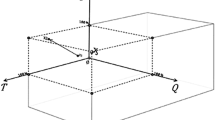Abstract
To increase the efficiency of the analytical services the analytical methods have been improved by mechanisation and automation, and combined with a real-time data processing system. The hardware consists essentially of a 28 K-words minicomputer with 2 disc storage units, teletypes and optical mark readers. The main functions of this part of the system are as follows: registering the incoming requests, supplying work schedules for the various laboratories, controlling the completion of the work within the required time, collecting, storing, and processing the results, making simple decisions, and finally, editing and printing the analysis reports. Moreover, the computer produces daily reports on the state of progress of requests, and stores the data for usage in statistics and cost accounting. There are 36 lines available for the transfer of data from the laboratories. An important feature of the system design is the transfer of electronically preprocessed data, i.e. already calculated final results. For this purpose, on-line desk-top calculators, alphanumeric display data terminals, and data preprocessing units (percentage-box) designed and developed in our own laboratories are being used. The individual places of work in the laboratories are thus to a great extent autonomous. This hierarchical data processing system yields technical advantages, and most of all, guarantees a permanent service ability of our laboratories since even in the case of a breakdown of the computer, the analytical work can be continued without any interference.
Zusammenfassung
Es wird das Konzept eines Echtzeit-Datenverarbeitungssystems beschrieben, das in Kombination mit mechanisierten und automatisierten Analysenmethoden eine Verbesserung der analytischen Serviceleistung ermöglicht. Die Hardware setzt sich im wesentlichen aus einem 28 K-Worte Kleincomputer mit 2 Plattenspeichereinheiten, Bedienungskonsolen und Beleglesern zusammen. Die hauptsächlichen Funktionen dieses Teils der Anlage sind: Registrieren der Aufträge, Erstellen von Arbeitslisten für die Laboratorien, Überwachen der termingerechten Auftragserledigung, Sammeln, Speichern und Auswerten der anfallenden Resultate, Treffen einfacher Entscheidungen und schließlich Erstellen und Ausdrucken der Analysenbefunde. Darüber hinaus verfertigt der Computer täglich Berichte über den Stand der Auftragserledigung und speichert Daten für die Statistiken und Kostenabrechnungen. Zur Datenübertragung aus den Laboratorien stehen 36 Linien zur Verfügung. Dabei ist wesentlich, daß elektronisch vorverarbeitete Daten, also fertig berechnete Resultate übertragen werden. Dazu dienen on-line angeschlossene Tischrechner, Datenstationen und Belegleser sowie Datenverarbeitungseinheiten (Prozent-Box) eigener Konstruktion. Die Arbeitsplätze in den Laboratorien sind somit weitgehend autonom. Dieses hierarchische Datenverarbeitungssystem bringt arbeitstechnische Vorteile, gewährleistet aber vor allem die ständige Servicebereitschaft unserer Laboratorien, da auch bei Ausfall des Computers an den Analysengeräten unbeeinflußt weitergearbeitet werden kann.
Similar content being viewed by others
Literatur
Clerc, J. T., Jost, C., Meier, T., Schwarzenbach, R.: Chimia27, 665 (1973)
Freybott, A., Heu, R., Otten, J.: GIT Fachz. Lab.19, 992 (1975)
Maciak, G. M., Byers, R. A., Landis, P. W.: Microchem. J.18, 8 (1973)
Merz, W.: Talanta21, 481 (1974)
Perone, S. P.: Anal. Chem.43, 1288 (1971)
Author information
Authors and Affiliations
Additional information
Verantwortlicher Projektleiter.
Neben den Autoren haben noch zahlreiche Mitarbeiter mit Kopf und Hand zur Realisierung beigetragen. Besonders danken wir den Herren R. Bucher, U. Frey und H. P. Stolz für ihre Mitarbeit.
Die Nennung von Firmen oder Geräten bedeutet keine ausdrückliche Empfehlung. Andere gleichwertige Produkte sollen weder ausgeschlossen noch diskriminiert werden.
Rights and permissions
About this article
Cite this article
Fenkart, K., Kübler, R., Padowetz, W. et al. Datenverarbeitung und Organisation in einem Laboratorium für organische und anorganische Elementaranalysen. Z. Anal. Chem. 282, 177–188 (1976). https://doi.org/10.1007/BF00564056
Received:
Issue Date:
DOI: https://doi.org/10.1007/BF00564056




